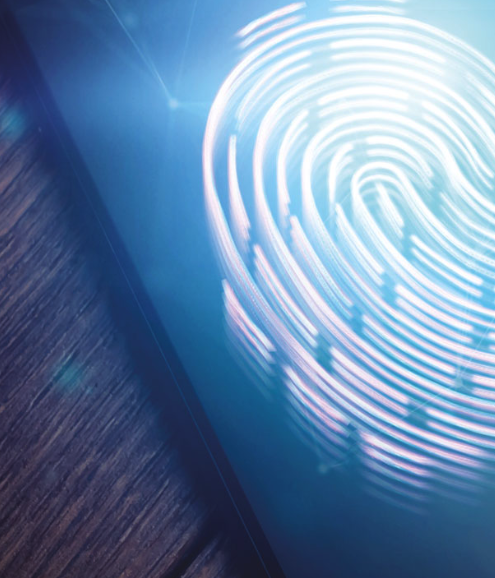
White Paper
4 things to make your eID project a success
In the competitive world of the Internet of Things, the demand for a fully functioning electronic identity (eID) has become more pressing than ever. As more and more people have access to the internet, and the need for electronic identity grows exponentially, it is crucial to adopt a proactive approach. Your citizens or your clients are expecting to communicate with the state or do business via electronic channels. Users have to be able to authenticate and sign documents digitally, and it is in your power to offer them the means to do so.

Why do you need electronic identity?
To deliver personalized and cost effective services, governments worldwide are faced with the challenge to meet an increasing need for seamless personal services. The cornerstone of a successful e-government is an infrastructure that manages electronic identity and digital signatures. This infrastructure should be set up in relation to public and private business goals and strategies.
Today, people want to be able to sign documents digitally or participate in elections without even leaving the comfort of their homes. Without a strong and trusted eID, these services are impossible. Implementing electronic identities and a digital signature service is a complex task involving many stakeholders. By 2021, 92% of ID cards issued worldwide will carry the functions of electronic identity.
Nortal's contribution to eID
Nortal has played a key role in developing and providing the eID system based on chip-cards (ID cards), SIM based MobileID and the mobile application Smart-ID that is not connected to a physical chip. Over the last decade, we have helped to build and modify existing eID solutions and integrate them to provide services. We have contributed significantly into making eID a natural part of the e-government infrastructure.
Nortal supports all aspects necessary for the successful implementation of electronic identity, whether this involves eID infrastructure, trust services, digital signatures, authentication solutions, establishing policy, supporting the legal environment or nationwide eGovernance.
1997
A decision is made to transform Estonia into a digital nation.
2000
By law, a digital signature is made equal to that created by hand in ink.
2001
First ID-cards are issued. Banks and telecoms join forces to deliver a digital disruption. Filing taxes is taken online and by 2017 almost 100% of taxes are filed via the internet. Software development for the ID card begins.
2002
ID-cards become obligatory and within a few months more than 50,000 cards are issued.
2003
By the end of the year, 350,000 ID-cards have been issued, roughly every fourth Estonian now carries one in the pocket.
2004
Tallinn public transportation starts using ID-tickets system, using ID-cards infrastructure to personalize bus tickets.
2005
First online elections in the world are held in Estonia. People cast their voting online, using eID to authenticate themselves. First retailer, bookstore Apollo, starts using ID-card as their loyalty card.
2006
1,000,000 ID-cards are issued, almost every adult in Estonia now has one.
2007
Mobile-ID is born, digital authentication can now be done using a cellular phone.
2011
Nortal becomes services’ developer for Mobile-ID. By 2017, Nortal is the main developing partner of Mobile-ID and certification authority services.
2014
Estonia gets first e-resident.
2017
Nortal is key development partner in introducing Smart-ID that allows people in the Baltics to authenticate themselves via a mobile application. Within a few months almost 500,000 people sign up.
2050
People have become part of the Internet of Things, everybody gets a universal electronic identity at birth that is part of a global system, just like telephone numbers today.
#1
Have the courage to digitalize critical government services
Generation Z, born between 1995 and 2010, account for more than a quarter of the world’s population. These people are now entering the workforce and becoming taxpayers. According to a Gartner anaylsis, they are less inclined to trust companies and brands, they expect to be heard and involved, and often seek out employers and brands that offer authentic and transparent experiences. The generation before them, the Millennials or Generation Y, is not so different in these respects. Born between 1980 and 1995, they account for another quarter in the global population. Like Generation Z, they also increasingly expect their governments to offer authentic transparent experiences, and treat them as valued customers.
E-services can help tackle this challenge, but to get to a fully functional digital government, a shift in mindset is needed. eID is the cornerstone to achieving a more transparent society where the government is a service provider, but the real societal change comes from making living easier by creating seamless and easy ways to communicate with the government.
Implementing a strong and widely accepted electronic identity sends a powerful message from the government that citizens and their time are highly valued. Not queuing in government offices for hours allows people to get on with their daily lives and create more value for society. As digital transformation requires time and patience, it’s crucial to map out the first services that will create the most impact.

Illustrative story: Seamless e-services make people happier
Mark (32) is an accountant using MobileID in Estonia every day – he has to file taxes for his clients, make bank transfers and use several government databases frequently. Thanks to e-services he can take on more clients as there is very little red tape.
Just a few months ago a chunk of his working hours were freed up after the Estonian Tax and Customs Board launched a solution enabling businesses to pay taxes without any actual contact with the Tax Board themselves. Mark now just has to categorize an online bank transfer as salary and the rest will be taken care of.
Mark also recently became a father. He expected the bureaucracy to be a nightmare. “I thought I’d have to take time off from work to go to a government office with my wife and new born baby, and queue there for hours,” he says. “But I was surprised to find out that I could just use my eID to log into a government information system to register the name we’ve chosen for our baby girl.”
Both Mark and his wife signed the application to name their daughter Diana online, using their mobile phones. “It was so smooth! It took us about the same time it does to file my income tax claim – about 4 minutes,” Mark says. “I’ve lived in other countries before and bureaucracy has been a nightmare. I’m so happy that’s not the case everywhere.”
#2
Lasting societal change starts with strategy
It is crucial to understand that the transformation to a strong eID, that is acknowledged by several stakeholders, is not something that happens overnight. By focusing on strategy and vision first, you can significantly reduce the time and effort needed to go through with this reform.
Every meaningful change starts with a strategy and a vision that states where you want to be. It’s important to answer questions such as why do you need eID in the first place and what exactly will people, the users, gain from it. Technological innovations have made our lives more complicated than they have ever been, meaning that people are much busier than they were even ten years ago. This has brought about a shift in how organizations see and treat their end users. Competition between enterprises is fiercer than ever and the same applies to countries – it is clear that when international investors are thinking about where to bring their next big adventure, they consider very carefully how easy it is communicate with the state and how the government treats tax payers.
All this needs to be thought through when you formulate a strategy for building and implementing eID. Once you have the strategy, it is also important to have a plan for how you will go through with the change. Change management is one of the crucial components in achieving lasting societal change. What services does the organization have to establish, what existing processes are you transitioning into new processes, what information exchange is necessary with other organizations and society, are a few of the questions to be answered before going digital. It is important to remember that changes in policy and processes should also be communicated to the broader public in a way that everyone can understand and relate to. Planning the communication should already start during policy drafting.

Illustrative story: Paperless Dubai 2021
Dubai is on its way to having a truly paperless government within just a few years. Nortal is proud to have helped the Dubai government establish this groundbreaking vision and policy.
With its vast experience in creating Estonia’s digital disruption, Nortal assisted the Dubai government in setting up the vision and road-map for a next-generation electronic identity and signature solution, key pillars in achieving the goal of making government absolutely paperless. By 2021, all public services in Dubai will be available through electronic channels around the clock, and the Dubai government will work 24/7 and 365 days a year. There will be no need to visit government service centers in person; users receive the results and documentation of services in electronic form on mobile devices.
A government issued strong authentication service will also be available to private companies, allowing them to authenticate and digitally sign transactions with their clients. Dubai’s future eID will be based on a cutting-edge tech solution that uses mobile and SIM card independent cryptography technologies. It will be easy to use in desktop and mobile environments for both authentication and signing documents digitally. A similar eID service is already available in Estonia.
#3
Don’t make enemies with the private sector
Just creating the infrastructure for eID is not enough. People will only start seeing the value and using their eID if there are services and policies to support it. Private e-services get the most out of the value of the system – this means that getting the private sector onboard is of key importance.
In Estonia, banks were a great help in promoting electronic identity. They saw it as a great way to have a secure and trusted way to authenticate people who wanted to use their services online. For them, it was also a great way to get customers to sign transactions digitally as an additional security measure.
This allowed banks to save on the cost of running their own sophisticated eID scheme and rely on the identities confirmed by the government – as they do in the physical world. Today, government provided electronic identity is a widely used means for authenticating loyal customers in the private sector, be it telecoms or retail.
Nortal’s analysts have the expertise to assist you in building an infrastructure that makes it comfortable and easy to use eIDs – that includes among others training and support for developers. We can also help create bridges between the public and private sectors to create additional services and incentives for the private sector to get on board.

Illustrative story: Banks can create a revolution
It is evident that although eID is mostly chip-based today, the trend is towards mobility.
In some cases, eIDs have already started using cutting-edge technology that uses independent SIM card cryptography solutions that divide private keys between mobile phone and server. In the Baltic states, for example, Smart-ID became a success story immediately. The solution was first introduced at the beginning of 2017, and within a few months it had almost 500,000 users. The solution was created with local banks that wanted to encourage people to start using more secure methods of authentication when using banking services online.
The user just needs a smartphone and a mobile application. Before starting to use the system, the users are identified through other means (such as chip-based ID cards or tellers in banks). After that, people can use their cellular phones to securely access e-services and sign documents digitally without requiring a card reader or any special SIM card.
#4
Technology is just a small piece of the jigsaw
Technology is definitely an important part of building and implementing a successful eID, but to be quite honest, tech is just a small part of it all.
Only a few of all the large-scale transformation projects are successful. Those projects are successful because they are not run as “yet another IT project”. Instead, there’s a holistic approach where all parties know that before you start coding, you need to have a clear vision of where you want to go, a strategy to achieve this, a plan to manage change and communicate it to the public. We estimate that creating the most suitable technology for eID makes up only about 20% of the project. For a successful eID, different tech solutions can be used, depending on what the client sees as a successful eID. Together, we can find a solution that best suits your users’ needs.

Key to success
For Nortal, the successful implementation of any eID reform depends on the balanced and systematic development of four pillars. When strategy and vision are in place, a legal framework for eID has to be set up. At the same time, we can already start working on the technological infrastructure. A separate team can focus on the on-board program and communication strategy for how to establish the general public’s trust in eID. Nortal’s top specialists support our clients through all the stages of this transformation in becoming a digital society.
Get in touch
Let us offer you a new perspective.


